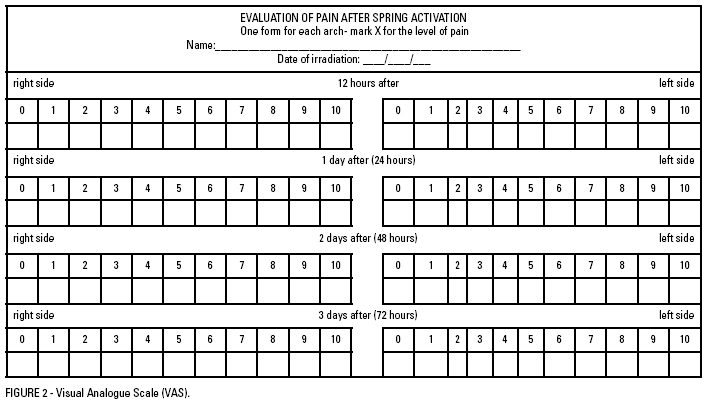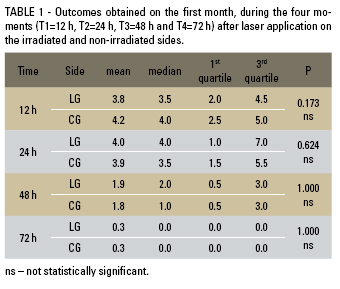OBJECTIVE: To evaluate the efficiency of infrared diode laser on pain reduction during canine initial retraction. METHODS: Twelve patients in need of canine retraction were selected. The canines were retracted with closed NiTi coil springs activated to 150g per side. One canine of each patient was randomly selected for laser irradiation immediately after activation and after 3 and 7 days. The contralateral canines were taken as control group and were submitted only to simulation of laser application. Diode laser (ArGaAl) was employed at wavelength of 780nm, power of 20mW and energy density in the target tissue of 5J/cm², for 10 seconds per point, delivering an energy of 0.2J per point and total energy (TE) of 2J. The analgesic effect was evaluated with aid of a visual analogue scale (VAS), on which the patients indicated 0 to 10 according to the pain experienced at 12, 24, 48 and 72 hours after coil spring activation and laser application. The procedure was repeated after one month, upon reactivation of canine retraction. RESULTS AND CONCLUSIONS: There was no statistically significant difference between irradiated side (LG) and control side (CG). Thus, utilization of infrared diode laser (780nm) according to the present protocol was not statistically effective to reduce pain sensitivity caused by orthodontic movement.
Diode laser; Low intensity laser; Orthodontic movement; Pain




